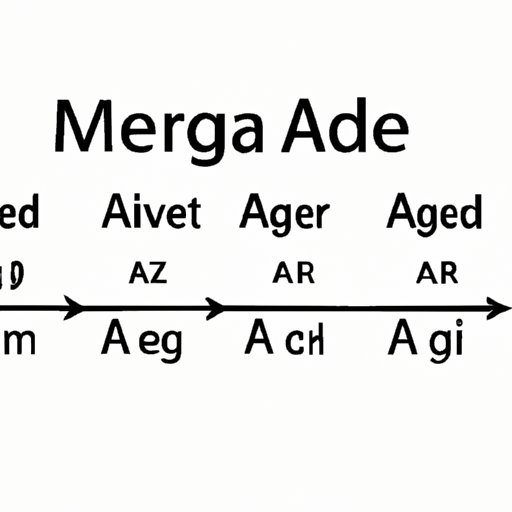
Introduction
Calculating averages has always been an essential part of mathematics. It is a fundamental concept that is used in various fields such as finance, engineering, statistics, and daily life. An average summarizes data, giving us a single value to represent different figures, making it easier to understand and analyze. In this article, we will explore the different methods used in calculating averages, from simple averages to weighted averages, and various shortcuts and tricks to make calculating faster and easier.
A Step-by-Step Guide to Calculating the Average: An Easy Tutorial for Beginners
The average, also known as the mean, is calculated by adding up a set of numbers and then dividing the sum by the count of those numbers. For example, to determine the average of the numbers 5, 10, 15, 20, and 25, you add all the numbers (5+10+15+20+25), which gives you 75, then divide by the count of numbers (5). Therefore, the average for this set of numbers would be 15.
Another example, the average of 2, 4, and 8 would be (2+4+8)/3= 14/3= 4.67.
Mastering Averages: Tips and Tricks to Easily Compute the Mean
Weighted averages take into account how often or how much each data point is used. For instance, if you want to calculate your GPA, you would weight the result of each class by the number of credits it represents. The formula for calculating a weighted average is Sum of (value x weight) / Sum of weights.
For example, to calculate the weighted average of a student’s grades, you need to multiply each grade by its weight (number of credits) and then divide that by the total number of credits.
Understanding Averages: Why They Matter and How to Calculate Them Accurately
Averages play a vital role in various fields. In finance, for instance, you can use an average to compare your investment’s performance over time. In statistics, you use averages to make statistical inferences on the population from a sample.
There are different methods used in calculating averages, depending on the data. When dealing with nominal or ordinal data, you can use mode since these types of data have no meaningful numerical values. In contrast, when dealing with interval or ratio data, you can use mean or median since these types of data have numerical values.
Simplify Your Math: Quick and Easy Ways to Calculate the Average
Several shortcuts can make calculating the average faster and easier. For example, when dealing with an arithmetic sequence, you can easily calculate the average of any series by adding the first and last terms and dividing the sum by two. Another shortcut is to use the median formula, which is to take the middle value of an ordered set of numbers. It is an effective way of finding an average in a skewed dataset.
Average Calculations Made Easy: A Comprehensive Guide to Finding the Mean
The combination of different methods and techniques for calculating averages can be useful for different situations; for example, when dealing with a set of numbers with extreme outliers, the mean might not be an accurate representation of the data. In such a case, using the median or mode might be more appropriate. In addition, when working with continuous data, you can use the Central Limit Theorem to approximate the mean and standard deviation.
How to Calculate the Average: Top Methods for Solving the Most Common Math Problems
The key to solving any math problem is understanding which formula or method to use. For instance, when dealing with fractional values, you need a different formula to find the average. It is essential to practice and apply these formulas and methods to different problems to become comfortable in using them.
Conclusion
Calculating averages is an important concept in mathematics and different fields. It is crucial to know how to calculate an average accurately to interpret data better. With the combination of different formulas and methods, it is easier to apply to specific situations, ensuring a more accurate representation of the data. By understanding and practicing these different techniques, calculations can be done efficiently and quickly, making it an invaluable tool in decision making.




